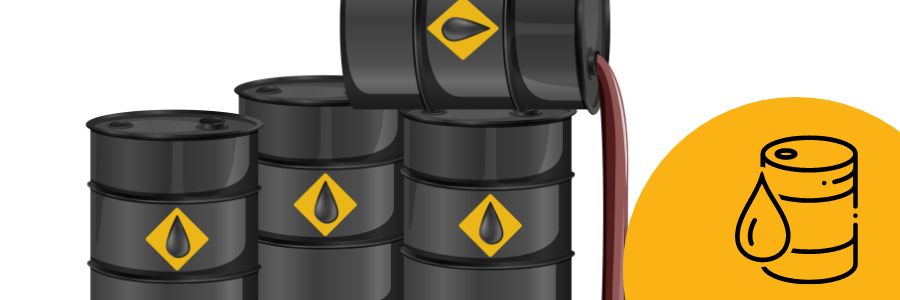
Canada’s economy is characterized by its diversity, stability, resilience, and competitiveness. As a highly trade-dependent nation, a significant fraction of its GDP is attributed to exportation and importation revenues. It is the 13th largest import and export country in the world, making it a hub for entrepreneurial opportunities.
The United States is Canada’s biggest trading partner due to its proximity, but Canada also engages in exchanges with other countries in Europe and Asia.
Top 10 Canadian Imports
1. Cars
Driven by consumer demand for an extensive variation of vehicles, including compact cars, sedans, SUVs, trucks, and luxury vehicles, the importation of cars into Canada has increased over the years. In 2021, approximately $28 billion worth of cars were imported to Canada, with the majority acquired from the United States, Japan, Germany, South Korea, and Mexico.
2. Car parts and accessories
Engine components, electrical parts, brakes, suspension systems, tires, wheels, automotive electronics, interior accessories, exterior accessories, and performance upgrades among others are some of the car parts and accessories that are regularly imported to Canada. Primarily, these are purchased from The United States, China, Japan, Germany, South Korea, Mexico, and Taiwan. About $20 billion was spent on car parts and accessories in the year 2021.
3. Trucks
Imported trucks into Canada come in different types and sizes: pickup trucks, light-duty trucks, medium-duty trucks, heavy-duty trucks, commercial trucks, and specialized trucks for different industries such as construction, agriculture, and transportation. Truck acquisitions amount to $15 billion spending of Canada in 2021. The United States is still its number one supplier of trucks followed by Japan, Germany, South Korea, and Mexico.
4. Crude oil
Sustaining the operation of refineries and meeting the demand for petroleum products, the importation of crude oil contributes to Canada’s energy security. According to data, Canada bought $14 billion worth of crude oil in 2021. The US and countries in the Middle East, Africa, and Latin America generally supply crude oil to Canada.
5. Processed petroleum oil
Although Canada has domestic oil production and refining capacity, it is not enough to meet the demand for petroleum products. Imported processed petroleum oil supplements domestic production and supports a steady supply of fuel and other petroleum-based products for businesses and industries in the country. About $14 billion was recorded to have been imported to Canada in 2021. Aside from the US, Saudi Arabia, Russia, Norway, and the United Kingdom are among Canada’s sources of processed petroleum oil.
6. Phones
Phones imported into Canada encompass devices such as smartphones, feature phones, tablets, and other mobile communication devices manufactured by major companies such as Apple, Samsung, Huawei, Google, and Xiaomi. A total of $11 billion was allotted to the import to Canada in 2021. Leading technology companies ship from East Asia, including China, South Korea, Taiwan, and Japan.
 7. Computers
7. Computers
Apple, Dell, HP, Lenovo, and ASUS are the top brands that import desktop computers, laptops, tablets, servers, workstations, and computer peripherals such as monitors, keyboards, and mice into Canada. Last 2021, the country spent $9 billion on importing computers. Major importers are China, Taiwan, South Korea, and Japan.
6. Medications
Prescription drugs, over-the-counter medicines, vaccines, medical devices, diagnostic reagents, and other healthcare products make up this category. Canadian population, as with any other nation, requires high-quality medications to manage their health conditions to ultimately improve their quality of life. Records show Canada’s $8 billion expenditure on medications in 2021. Main sources of medications are countries such as the United States, India, China, Germany, Switzerland, and South Korea.
9. Turbo-jets
The aerospace and aviation industry are a huge part of Canada’s economy. Propulsion systems used in aviation, including turbofan engines, turbojet engines, turboprop engines, and turboshaft engines are always in demand in Canada due to their contribution to the implementation of research and development collaborations, as well as opportunities for innovation and skills development. Canada imported $6 billion worth of turbo-jets in 2021 from the US, Europe, and other regions.
10. Gold
Imported in many forms such as bullion, bars, ingots, coins, and semi-finished products, gold is crucial in jewellery manufacturing, electronics manufacturing, dentistry, aerospace, and medical devices. Around $6 billion was documented as Canada’s expenses for gold in 2021. The United States, Australia, South Africa, China, and Russia remain Canada’s primary sources of gold.
Conclusion
Having expert assistance for logistics and transportation can make or break your import ventures. For access to a reputable freight forwarder, go to Connecta, and make your business goals come to life.







 7. Computers
7. Computers





